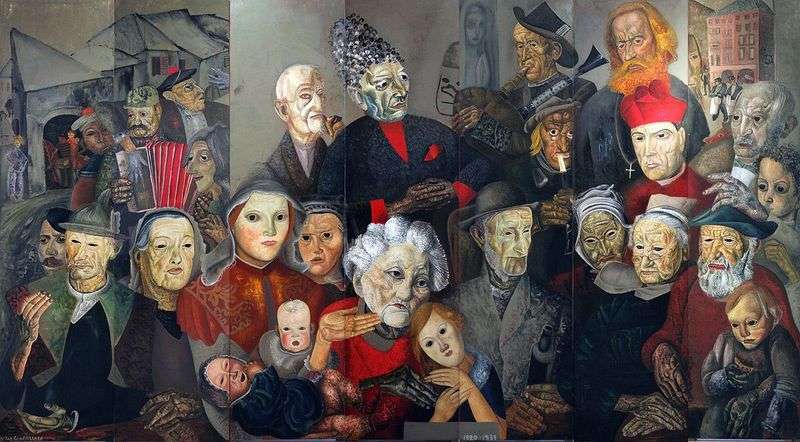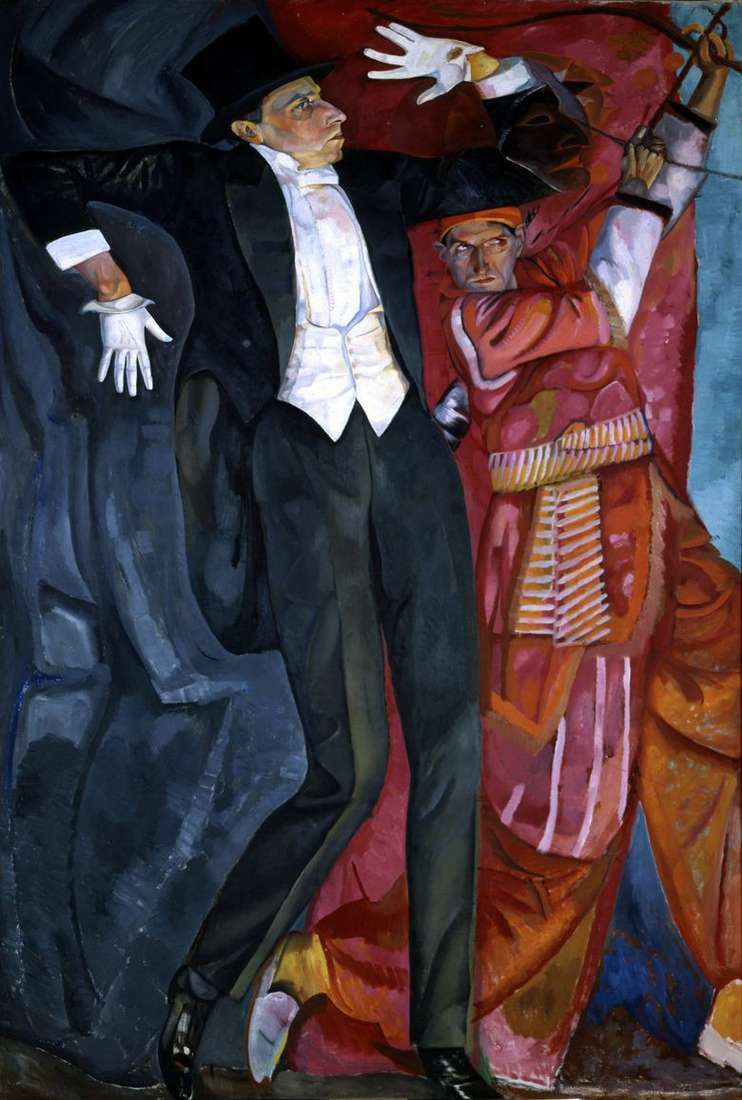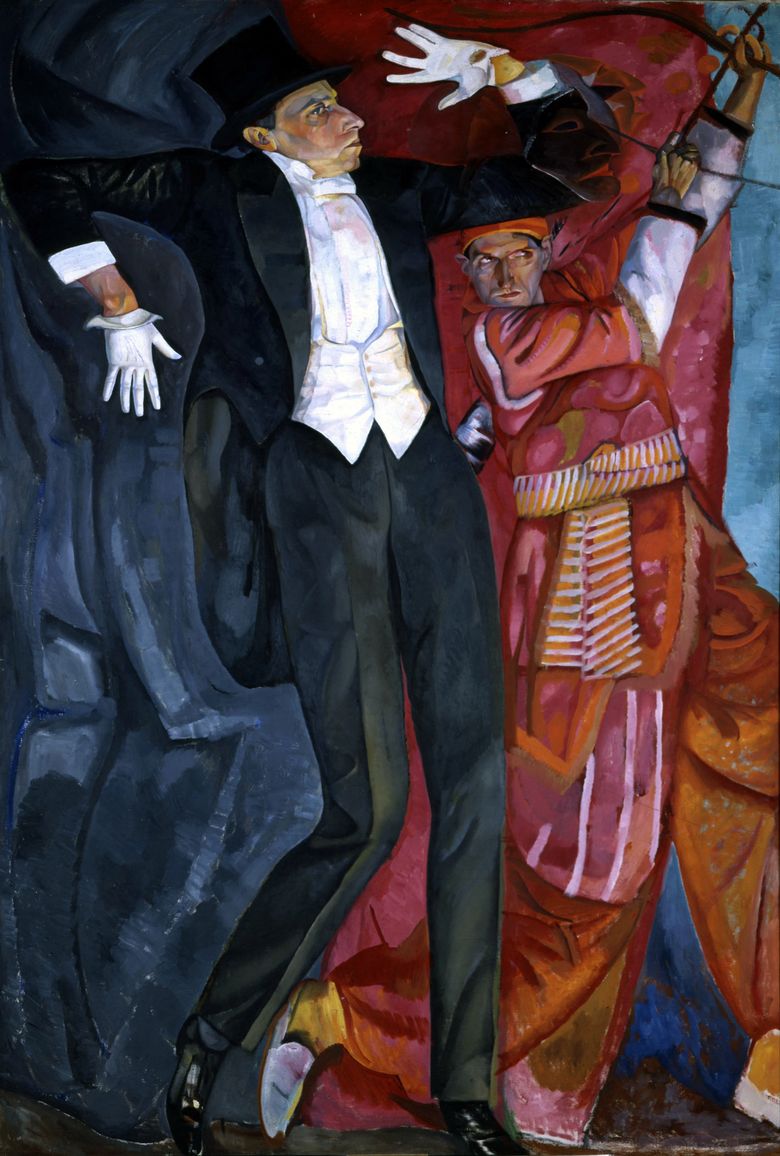
The idea of “faces” was a favorite in the art of the early twentieth century, rooted in medieval sacral art. In connection with this, it is natural to choose the material – wood, oil, – and “transformation” of the form of the book into a multi-folded fold.
“The scene of the painting” Boris Grigoriev called Europe. Characters:
English Bishop Wedgwort, Maurice Guest, Sun. Meyerhold, I. Stalin, Metropolitan Platon, Claude Farrer, Clara Sheridan, Pere Papa, Wanda Landowska,
And also a harmonist, a Jewish banker with a child, a Breton fisherman, the “grandmother” of the Russian revolution, Senora Edvards, M. Gorky’s granddaughters, sailors, garons, Chekists, etc.
Grigoriev worked on this painting, using photographs from portraits and paintings, known at the artist’s homeland only on reproductions and long sold in all parts of the world.
The composition depicted, according to the author’s definition, “something like a rally.” This justifies a certain crowding of characters, a variety of their positions, poses, gestures, different directions of views. In the foreground – so-called. “pra-folk” – characters of the Breton cycle, created back in the 1920s. In the background, the “rulers of the masses”: a “politician” in the clothes of a Caucasian highlander and in a compositional duality with him, a character with the features of Maurice Gest, the “king” of the American entertainment industry. Bright portrait individualization – from the English bishop Voordsvort, a supporter of the unconventional “free religion”, and the Russian Orthodox Archbishop Platon, rejected by the modern Russian Orthodoxy.
Meyerhold is depicted in a sailor’s hat, admirer and propagandist of ancient music V. Landovskaya – in the form of a bird-jackdaw from invisible clockwork, the poet-futurist V. Kamensky is likened to a village “harmonica-singer”.
All images occupy a subordinate position to the “title” scale of the face of Breshko-Breshkovskaya.
 Portrait of VE Meyerhold by Boris Grigoriev
Portrait of VE Meyerhold by Boris Grigoriev Rostros del mundo – Boris Grigoriev
Rostros del mundo – Boris Grigoriev Visages du monde – Boris Grigoriev
Visages du monde – Boris Grigoriev Retrato de V. E. Meyerhold – Boris Grigoriev
Retrato de V. E. Meyerhold – Boris Grigoriev Portrait de V. E. Meyerhold – Boris Grigoriev
Portrait de V. E. Meyerhold – Boris Grigoriev Group portrait of the artists of the World of Art by Boris Kustodiev
Group portrait of the artists of the World of Art by Boris Kustodiev Zemskaya school in Moscow Russia by Boris Kustodiev
Zemskaya school in Moscow Russia by Boris Kustodiev Sisters by Boris Vallejo
Sisters by Boris Vallejo